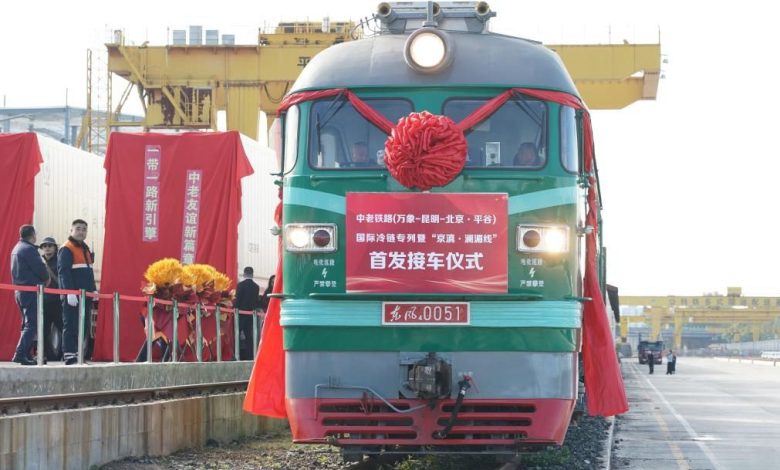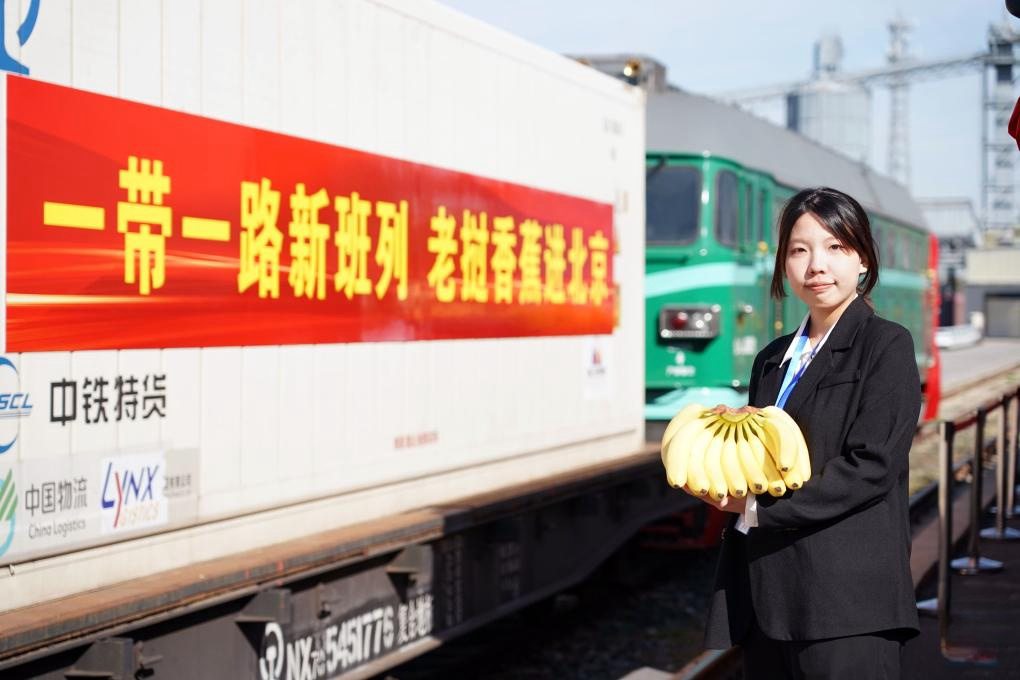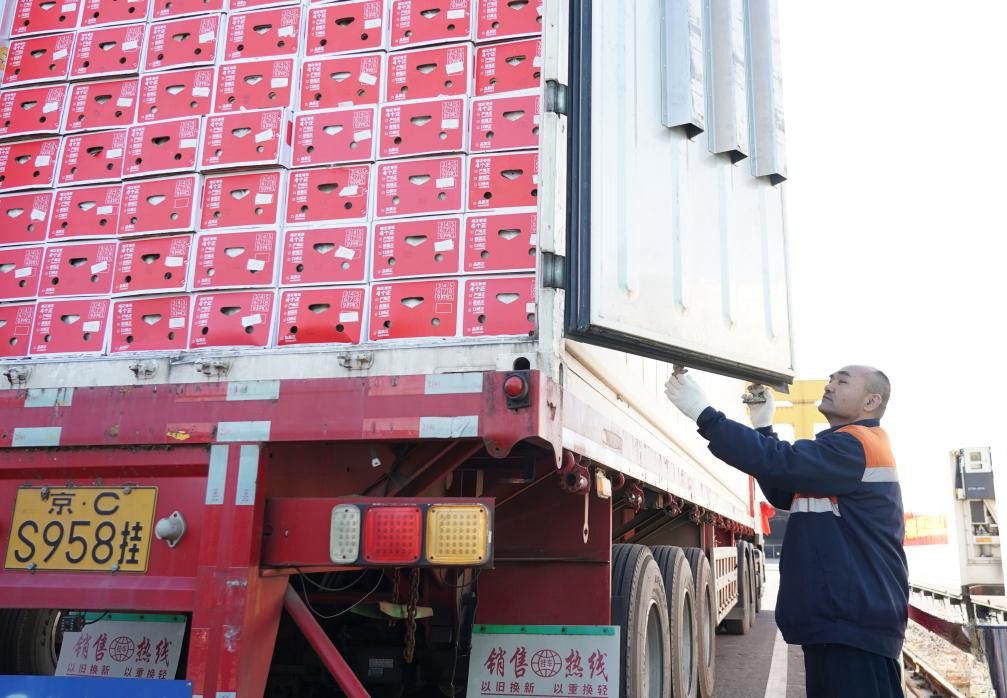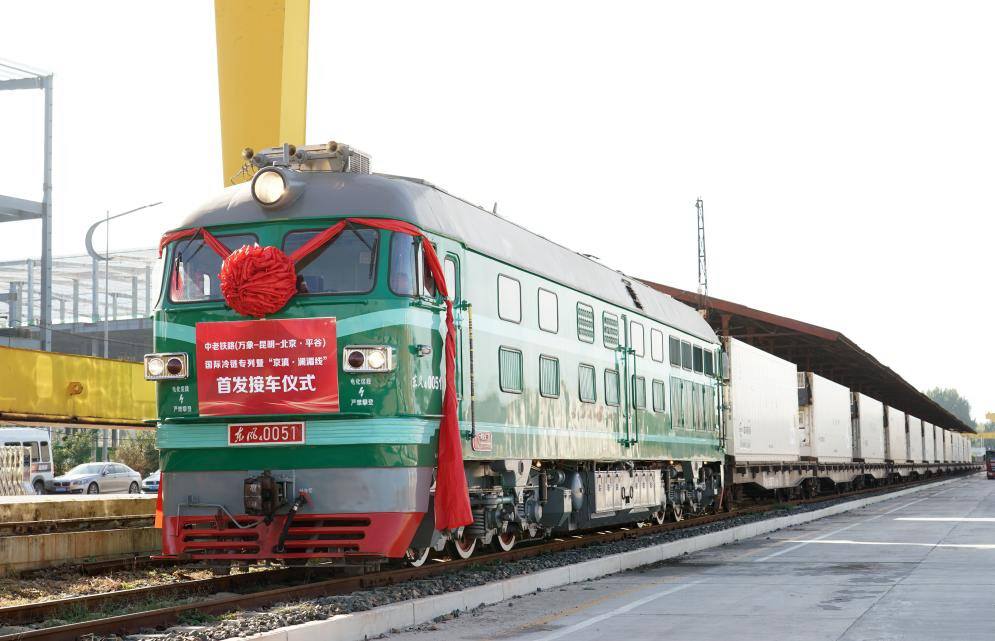China-Laos Railway Boosting ASEAN Connectivity under BRI

By: Muhammad Arif, Editor NSN.Asia
Beijing: China expands connectivity in Asia through development of rail transport under the Belt and Road Initiative (BRI). The arrival of a shipment of 390 tons of bananas, transported from Vientiane to Kunming city of China, and moved onwards to Pinggu district in Beijing through Laos-China railway, set the new milestone as regards Trans-Asia rail connectivity under the Silk Road Spirit of cooperation and mutual benefit.

The shipment of Lao bananas arrived in Beijing on Sunday after the train left Vientiane on October 12, completing the eight-day journey on the Laos-China railway before reaching its destination in Pinggu district, Beijing.
According to custom data, China imports about 700,000 tons of bananas from Laos annually.

After leaving Vientiane, the train entered China through Mohan Port in Southwest China’s Yunnan province and the bananas arrived in Beijing through cold-chain transport, according to Chinese media.
Director of the Cold Chain Logistics Department of the China Railway Special Cargo Logistics Company, Yi Qiang, told the media on Sunday that compared with traditional methods, this shipment used a full cold-chain and smart logistics system, speeding up delivery and reducing costs.
“To ensure the successful launch of the first cold-chain train, our company provided a tailored logistics plan, using its cold-chain containers to precisely manage temperature, humidity and other conditions based on the requirements for carrying bananas, guaranteeing cargo quality throughout the journey,” Yi said.
Beijing will work with various enterprises to boost the transport capacity of the China-Laos railway, aiming to enhance regional trade.
The 1,000km long Lao-China Railway has transformed how goods and people move across the Mekong region, with spillover benefits for other ASEAN countries.

Chinese railway authorities introduced its first refrigerated freight train service from Yunnan Province to Laos via the Lao-China Railway, marking a significant step in enhancing the efficiency of transporting perishable goods, like fruits and vegetables, across the Mekong region.
In September 2024, Lao-Chinese railway provided aid transport to the flood-hit areas in Luangnamtha province of Laos. The transport of donations, aid and assistance from public and social organizations and donor agencies reached the hands of the flood affected parents and relatives through the Lao-Chinese railway.
In Oct 2024, Laos-China Railway increased high-speed passenger trains from Vientiane to Luang Prabang on October 16-17, 2024, to facilitate the passengers of Lent festival.
Luang Prabang’s Lao New Year festivities drew over 110,000 visitors, generating more than USD 47 million in revenue, showcasing the province’s cultural heritage and highlighting the impact of improved connectivity through the Laos-China Railway.
Under the Belt and Road intuitive, Beijing has built a vast web of roads and railways through Southeast Asia, massive Chinese-financed infrastructure projects in Laos, Malaysia which are quietly reshaping the geo-economic landscape of ASEAN.
The $6 billion China-Laos Railway, a landmark project of high-quality Belt and Road cooperation, began operations in December 2021.
The vast rail network, with passenger and cargo, provided a direct route from Kunming, China, to the Gulf of Thailand through connections with previously existing rail lines in those countries, stands as a symbol of Beijing’s ambitious regional connectivity strategy under BRI.
Initially planned with 32 stations, the railway currently boasts 10 passenger stations and 10 freight stations, with further expansion in progress.
According to railway authorities, China-Laos railway is managed by the Laos-China Railway Company, a joint venture in Vientiane. In the railway business, Laos has a 30% stake through the Lao National Railway State Enterprise, with Chinese state-owned enterprises, led by China State Railway Group Company Ltd., covering the remainder. Funding includes a 60% loan from Eximbank of China and 40% equity investment from each nation.
China-Laos railway is reshaping the geo-economic landscape of ASEAN, it stands as a symbol of China’s ambitious strategy for Trans-Asia connectivity that creates opportunities for mutual development, and fosters regional cooperation for business and cultural exchanges under the Silk Road Spirit of mutual respect.

